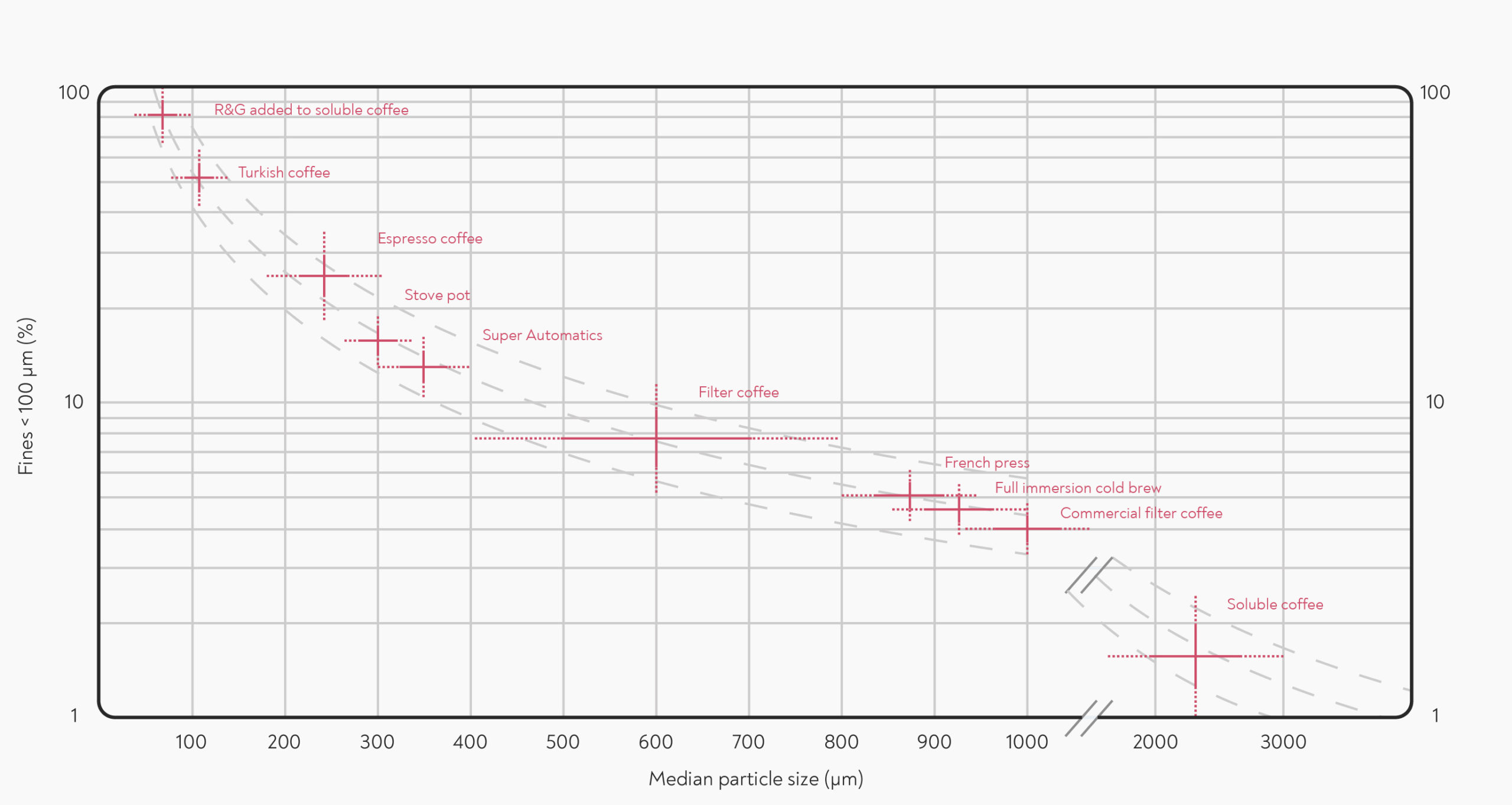The typical particle size averages for various brew methods are shown in the chart below. It shows, as a percent, the median particle size (the particle size that is halfway between the smallest and the largest particle measured) as well as the amount of fines for different brew methods. According to Blittersdorf and Klatt (2016), Turkish coffee is prepared with a grind size distribution where 50% of the particles have a diameter of less than 100 μm.
Note: For the purposes of the illustration, fines are defined as any particle below 100 μm in diameter.
 This chart (above) from Blittersdorf and Klatt (2016) shows the typical particle size averages and the amount of fines for different brew methods.
This chart (above) from Blittersdorf and Klatt (2016) shows the typical particle size averages and the amount of fines for different brew methods.
The video below presents our findings from an experiment that compares the extraction yields of cupping bowls prepared with three different grind size distributions. We sieved particles into three groups: below 250 μm in size; between 250–500 μm in size; and a group of boulders containing only particles retained in a 500-μm sieve. We found that the group of particles below 250 μm in size rose to a 22% extraction yield in only 15 seconds. In the same amount of time, the 250–500 μm group hit just below 19%, and the group of boulders reached just over 14% extraction yield. We continued to take measurements of the extraction yields of each sample for 10 minutes.
With some simple maths, based on the assumption that every grind was a perfect sphere, we estimated that extraction processes (erosion and diffusion) were only taking place up to a maximum depth into each coffee grind of approximately 100 μm (approximately the thickness of a human hair). This suggests that for any grind particle with a radius larger than 100 μm, the core of each grind will be relatively untouched by extraction. If you refer to the chart above, you can see that some brew methods, such as the French press,